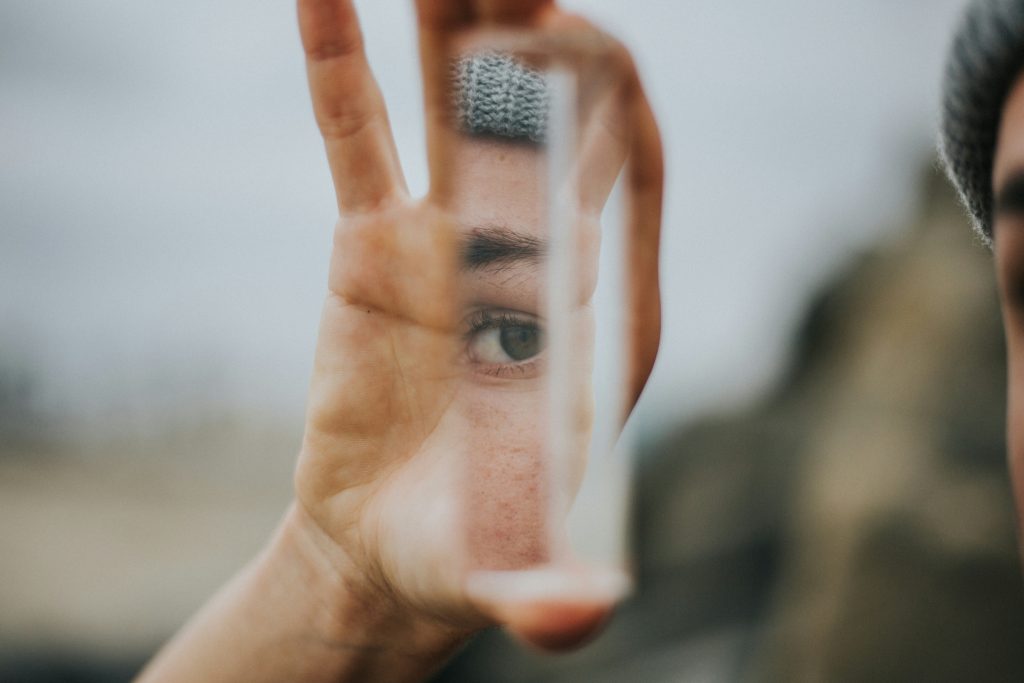
In the UK, young people (YP) who are struggling with moderate-to-severe mental health symptoms are often referred to Child and Adolescent Mental Health Services (CAMHS), which are specialist services within the NHS designed to support YP with emotional, behavioural, and mental health difficulties.
However, it is well-known that the demand for CAMHS far outstrips what the service is currently able to provide, due to issues like low resources and underfunding. In fact, it’s previously been reported that YP may have to wait for up to 27 weeks before being seen for an initial assessment (Stafford et al., 2020). However, this study was conducted before the COVID-19 pandemic, and since then, reported mental health problems in YP has only increased.
As I am sure we are all aware, the video-based social media platform TikTok is very popular with YP and is increasingly being used to search for and share mental health information. It is perhaps no surprise then, that the CAMHS hashtag (#camhs) has been viewed more than 730 million times (as of November 2023), or that a previous quantitative study found that 27/100 videos portrayed a negative perception of CAMHS (Chadee & Evans, 2021). To explore this further, Foster et al. (2024) conducted a qualitative study to better understand how CAMHS is perceived by YP through TikTok.

Young people are increasingly using social media to search for and share mental health information. TikTok seems like a particularly popular app for sharing lived experience, including experiences of CAMHS.
Methods
The authors created a TikTok account for research purposes and used an incognito browser to generate a sample of 100 videos from the #camhs hashtag. The first 100 videos that appeared that met the inclusion criteria (downloadable, involving someone speaking to the camera, content explicitly related to CAMHS) were included. Although it was not possible to identify specific demographic details, the authors noted video length, date of upload, caption, perceived gender of creator, and the number of views, likes, and comments. Data was analysed through inductive framework thematic analysis (TA).
Furthermore, five young co-researchers aged 15–17-years-old were involved in the analysis and interpretation of the data in this study, four of whom actively used TikTok.
Results
The 100 sampled #camhs videos averaged 17 seconds long (SD = 16.7) and were mostly posted in 2021, with an average of 226,383 views (SD = 567,077), 46,454 likes (SD = 139,237) and 587 comments (SD = 11,199). The video creators were predominantly White female adolescents.
Inductive framework TA generated four primary themes.
Theme 1: CAMHS can be frustrating and unhelpful, but sometimes life-saving
- Young people (YP) displayed feelings of frustration, anger and helplessness at not receiving the support from CAMHS that they initially expected, particularly given how long the waiting lists were.
- YP were especially critical over generic coping strategies offered during times of crisis, as well as harm minimisation practices, like breathing exercises or relaxation activities.
- Less than 10% of videos discussed positive experiences of CAMHS, where YP felt listened to and meaningfully involved in their care.
- Overall, YP perceived clinicians to care more about organisational procedures than providing them the care they need.
All CAMHS did was put me on a waiting list.
Theme 2: YP can feel their distress is invalidated by CAMHS
- YP frequently reported having their feelings and experiences dismissed and invalidated by CAMHS clinicians, with clinical training and scientific knowledge prioritised over lived experience.
- YP highlighted how difficult it was to receive a formal diagnosis through CAMHS, and felt terms like “low mood” undermined the severity of what they were experiencing, alongside suggestions that their feelings were related to hormones, school, or friendships.
You might have attended a one-hour lecture on my specific condition, but the fact that I’ve been living with it for my whole life, surely I know more about it than you?
Theme 3: CAMHS makes YP feel responsible for their distress
- YP felt that CAMHS made them responsible for their distress, including suppressing their emotions so they don’t upset those around them, and demonstrating that their distress is severe enough to receive support.
- YP perceived that they would only receive help if they were at imminent risk of suicide, and that anything else was viewed as less.
- Several videos also shared service users returning to CAMHS as adults to improve the service for other YP.
[CAMHS psychiatrist] told me they won’t help me with my a0r3x€ıa because my weight isn’t low enough.
Theme 4: YP may not feel CAMHS professionals are trustworthy
- YP perceived CAMHS clinicians as untrustworthy and inauthentic, especially in relation to patient confidentiality; YP felt like clinicians would say one thing to them, and would then go behind their back to disclose it to their parents.
- In this way, CAMHS was represented as a space where YP must moderate what they say, for risk of others finding out.
‘We do care about you’, ‘then why was I dis-charged during a crisis?’

Analysis of 100 #camhs videos on TikTok highlighted that young people predominantly held negative views towards the service, feeling frustrated and helpless from not receiving the support they wanted and perceiving that clinical knowledge was prioritised over lived experience.
Conclusions
This study by Foster et al. (2024) highlights the different ways in which CAMHS is perceived and experienced by YP, as represented in TikTok videos. The authors indicate that the four themes collectively
represent CAMHS as a space where young people occupy a disempowered, subjugated position; a space in which they are ‘done to’, rather than ‘done with’.
This is the opposite kind of environment that many healthcare professionals hope to foster, and highlights an urgent area for further investigation and intervention.

Young people also posted videos that shared their positive experiences of CAMHS, where they felt listened to and meaningfully involved in their treatment. In some cases, CAMHS was experienced as lifesaving.
Strengths and limitations
The greatest strength of this paper lies in the involvement of young co-researchers in the analysis and interpretation of the data for this study. As highlighted in a previous Mental Elf blog that I co-wrote, there are many benefits for researchers and YP in meaningfully involving young co-researchers in psychological studies, including building relationships with peers, developing skills, and better translation of research into practice. It’s great to see this in practice, and to see such a structured approach to coproduction – but it could have potentially been even better if they were named (or had been given the opportunity to be named) on the paper itself.
However, there are some limitations that must be considered:
- Due to extracting data from TikTok, it was not possible for the researchers to determine the exact characteristics of the video creators, meaning it is difficult to know how representative these videos are of YP’s experiences of CAMHS. It would be interesting to see a follow-up study where TikTok users in #camhs are invited to complete a qualitative survey about their experiences, enabling the collection of demographic data and potentially a deeper understanding of why they hold these views.
- There is a wide range of reach, likes and comments across the 100 sampled videos. This could be considered a strength, as it demonstrates diversity of content and engagement, but it makes it difficult to know if the sampled videos represent what YP actually view, causing issues with validity.
- It was unclear from the paper if the sampled videos were from casual TikTok users or content creators. When considering the influence of these videos on YP’s perceptions of CAMHS, this seems like an important area to report on.
- While the authors mention reflexivity, it remains surface-level and tells readers little about how the researchers’ own values, beliefs, and experiences may have contributed and influenced this study.
- At no point do the authors explicitly highlight the strengths and limitations of their own study. Perhaps this is an issue related to the journal word count, but it again shows a lack of reflection and criticality regarding their own work. I’m admittedly surprised that the journal didn’t query this prior to publication.

The greatest strength of this paper lies in the involvement of young co-researchers. However, there is also little reflexivity, despite it being mentioned; more of this would strengthen the paper.
Implications for practice
I wanted to write this blog because I was in and out of CAMHS for 8 years when I was a teenager, and some of my own complicated feelings about the service are represented in this paper. Now being in a privileged position where I have worked with and been supervised by CAMHS clinicians, I can see both sides of the coin and know there isn’t a quick fix to the issues highlighted in this paper.
Personally, I wonder if it could be helpful for clinicians to ask YP in assessments about whether they have any preconceived views or opinions about CAMHS, either from their own prior experiences, through friends, or social media, and to work with YP to identify what they can both do to overcome this. As a teenager, my response would have been something like “Keep me in the loop. Let me know if things are changing. Ask me if I feel like something is working – and if it isn’t, let’s try something else”. I would never underestimate how powerful it can be to give YP an element of control over their care, even if it’s just being able to tell you what isn’t working for them.
To me, this paper also highlights how important it is to signpost and refer YP to services outside of CAMHS – for example, Mental Health Support Teams (MHSTs) in schools, and Children and YP’s Wellbeing Practitioners (CWP) in community, charity, and primary care settings. Researchers and practitioners need to prioritise getting YP the help they expect as quickly as possible, and if CAMHS can’t meet that need, we need to get creative. It also makes me think of the possibility of single-session interventions, and the support that can be provided to YP this way (see Maria and Georgia’s Mental Elf blog to learn more!)
Finally, work also needs to be done to improve the public image of CAMHS. Based on previous research, we know that expectations can be important for treatment outcomes and engagement (Watsford et al., 2013); it is therefore a problem if YP expect to receive poor treatment in CAMHS or if they expect that their needs will not be met. We need to increase YP’s confidence in CAMHS, and how this is done requires input from all involved stakeholders.
Equally, it must also feel exhausting and disheartening for clinicians who are doing the best they can with the resources they have, yet feel like their work is under-appreciated or not making a difference. We know the risk factors and consequences of burnout among mental health professionals (O’Connor et al., 2018) so we really need to consider how to best support CAMHS practitioners while working in a service that is in great demand and under-funded.

Based on studies like this, it seems vital that we consider how to improve young people’s confidence in CAMHS, whilst also ensuring that CAMHS practitioners are receiving the necessary support to continue working.
Statement of interests
None.
Links
Primary paper
Foster, M., Frith, H., & John, M. (2024). ‘I’m still su! c! dal when you’re done with the paperwork’: an inductive framework thematic analysis of# camhs on TikTok. Journal of Child Psychology and Psychiatry, 65(10), 1258-1269.
Other references
Loades, M., & Kemp, G. (2022). Just one shot at it: single session interventions for adolescent depression. The Mental Elf.
Luximon, M., & Higson-Sweeney, N. (2023). What are the benefits of including young people in mental health research? Findings from interviews conducted by co-researchers. The Mental Elf.
O’Connor, K., Neff, D. M., & Pitman, S. (2018). Burnout in mental health professionals: A systematic review and meta-analysis of prevalence and determinants. European Psychiatry, 53, 74-99.
Stafford, J., Aurelio, M., & Shah, A. (2020). Improving access and flow within Child and Adolescent Mental Health Services: A collaborative learning system approach. BMJ Open Quality, 9(4), e000832.
Watsford, C., Rickwood, D., & Vanags, T. (2013). Exploring young people’s expectations of a youth mental health care service. Early Intervention in Psychiatry, 7(2), 131-137.







